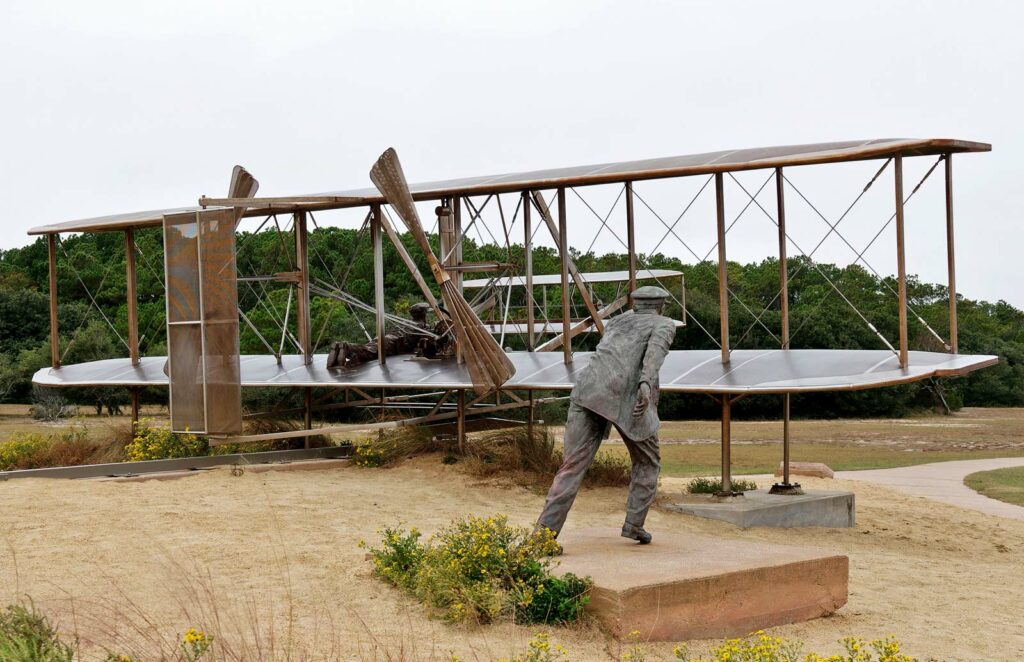Explore the history, design, performance, and military use of the iconic Wright Flyer aircraft, a pioneering marvel in aviation.
This article delves into the remarkable story of the Wright Flyer, an aircraft that marked a significant milestone in aviation history. It covers its development, design, performance, military use, and ultimate legacy in the world of aviation.
The Wright Flyer, a pioneering aircraft, was developed during a time when aviation was still in its infancy. In the early 20th century, the world was on the cusp of a transportation revolution, and the Wright brothers, Orville and Wilbur, sought to harness the power of flight. The aircraft was conceived to achieve controlled powered flight, a feat previously deemed unattainable. On December 17, 1903, the Wright Flyer made its first historic flight at Kitty Hawk, North Carolina. This event marked the birth of powered aviation. The NATO nickname for the Wright Flyer is “Kitty Hawk.”
History of the Development
At the turn of the 20th century, aviation was a dream, and the Wright brothers were driven by a vision to conquer the skies. The Wright Flyer emerged as a solution to this dream. The aircraft was meticulously designed and constructed by the brothers in their bicycle shop. It featured a wingspan of 12.3 meters (40 feet 4 inches) and weighed 274 kilograms (605 pounds). The objective was to create a controllable, powered aircraft capable of sustained flight.
The Wright Flyer program was launched with extensive experimentation. On December 17, 1903, Orville Wright piloted the aircraft for a 12-second, 120-foot flight, marking a historic milestone. The aircraft’s groundbreaking design principles included a three-axis control system and a 12-horsepower engine, which propelled it to a maximum speed of approximately 30 miles per hour (48 kilometers per hour).
Design of the Wright Flyer
The Wright Flyer’s design was groundbreaking in the early 20th century. Its wings were cambered to provide lift, and the aircraft featured a biplane configuration. The use of a lightweight 12-horsepower engine drove two propellers. This design allowed the Flyer to achieve controlled, sustained flight.
Advantages of the design included precise control through the three-axis control system, which became a fundamental principle in aviation. However, the aircraft had drawbacks, such as limited speed and payload capacity. Nevertheless, it laid the foundation for subsequent aircraft development.

Performance of the Wright Flyer
The Wright Flyer’s performance was remarkable for its time. It was powered by a 12-horsepower engine, propelling it to a top speed of approximately 30 miles per hour. Its maximum altitude was around 10 feet, and it had a range of roughly 120 feet. While these numbers may seem modest by today’s standards, they represented a significant achievement in the early 1900s.
In comparison to contemporary aircraft, the Wright Flyer was not a powerful aircraft, but it served as a pivotal proof of concept that powered, controlled flight was achievable.
Military Use and Combat
The Wright Flyer was not used in military conflicts due to its limited capabilities and the rapid advancements in aviation technology during the early 20th century. It was primarily a prototype and a milestone in aviation history.
The Wright Flyer, with its historic first flight in 1903, paved the way for the modern aviation industry. Its groundbreaking design and successful flight were instrumental in demonstrating the feasibility of powered, controlled flight. While it never saw combat, its legacy lives on as an iconic symbol of aviation innovation and achievement, forever etched in the annals of history.
Back to the experimental aircraft section.